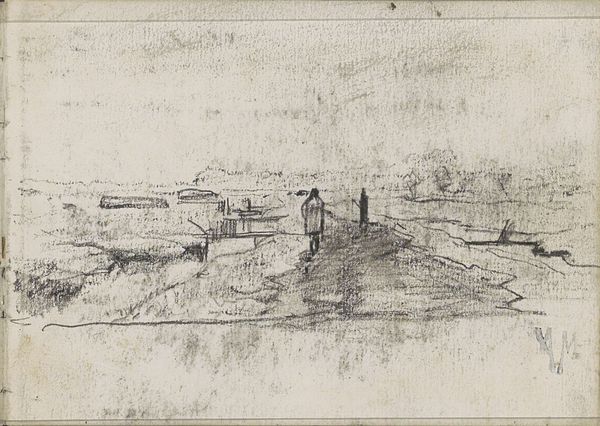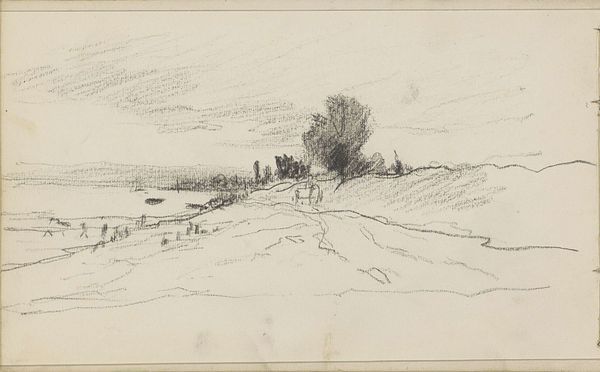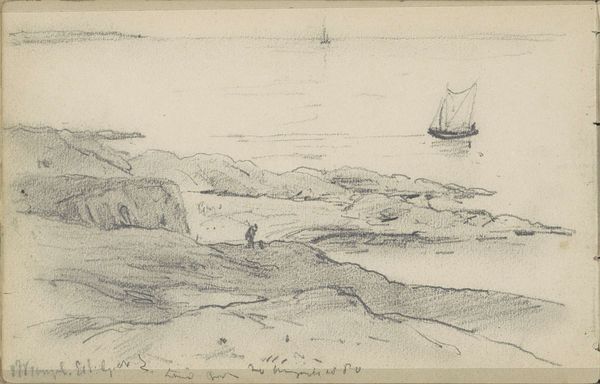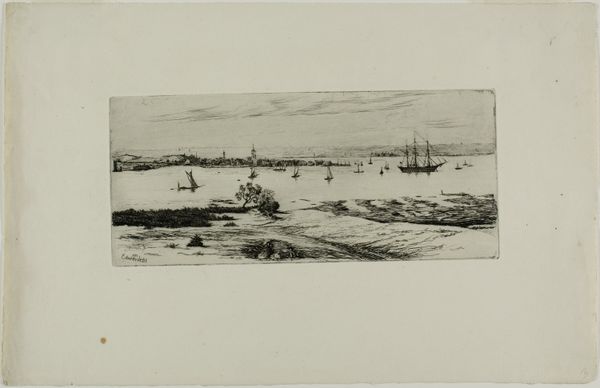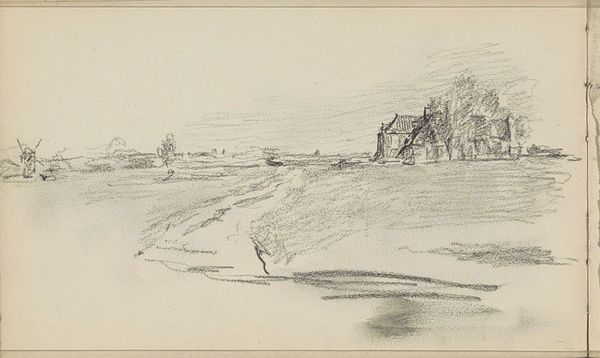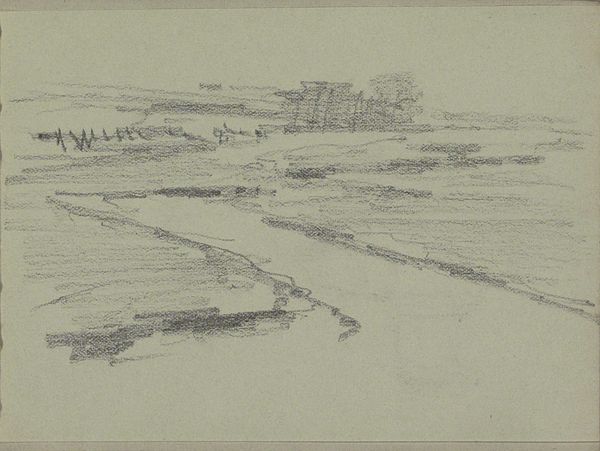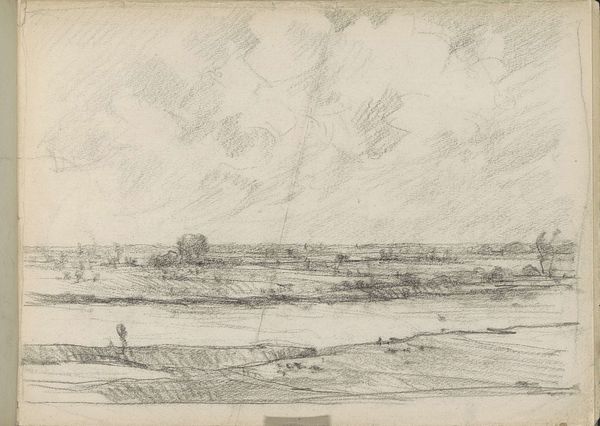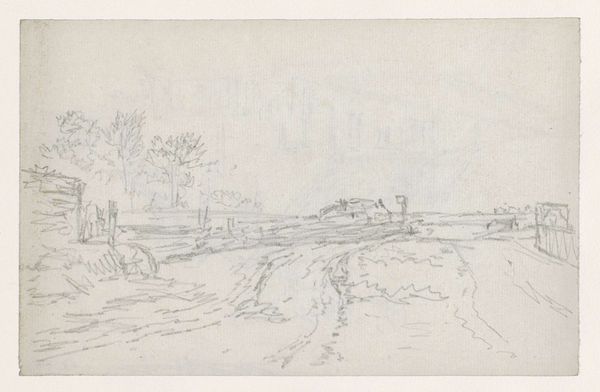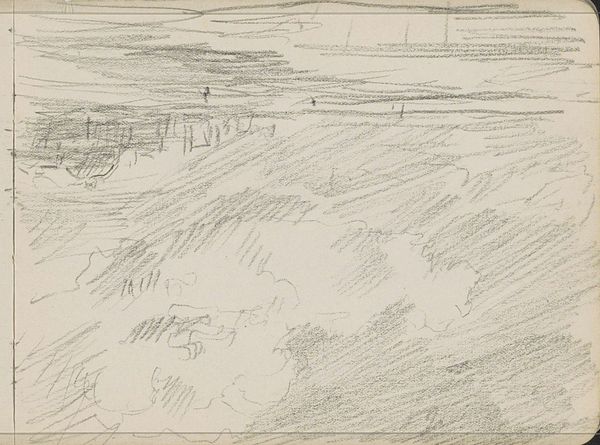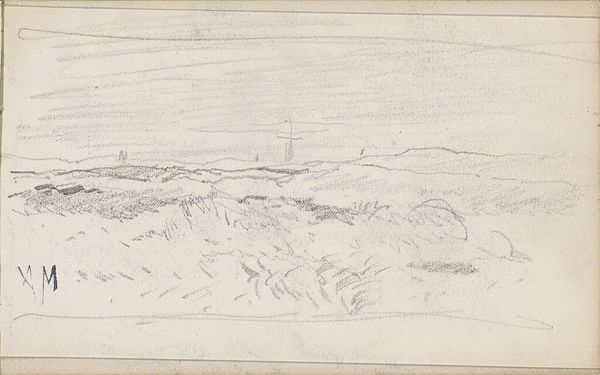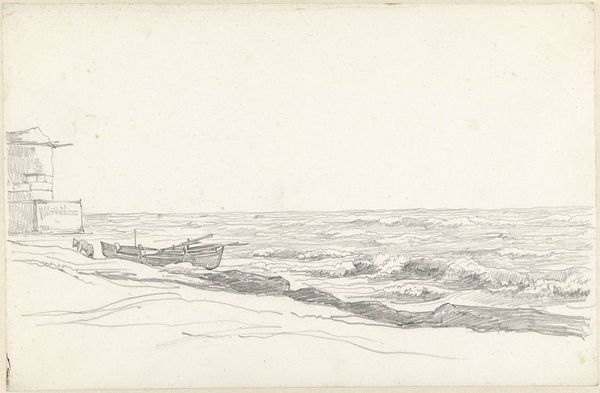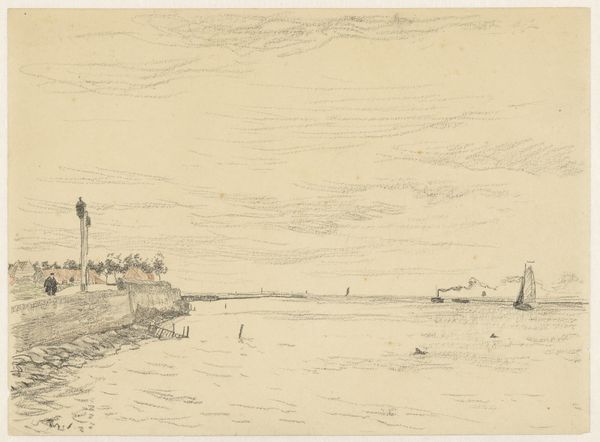
Copyright: Rijks Museum: Open Domain
Curator: "Duinlandschap", or "Dune Landscape," by Johan Antonie de Jonge, probably executed between 1881 and 1927. It's rendered with pencil on paper, showing a coastal vista. What strikes you initially? Editor: Bleak beauty, almost monochromatic, the soft grays evoke such a sensory feeling of sand and wind. There's an emptiness there but not an unwelcome one—makes me ponder solitude. Curator: Precisely, the composition invites that introspection. Note the horizon line bisecting the plane almost perfectly—anchoring the tangible lower third from an open indefinite sky. The impressionistic hatching creates texture, depth, and varying light as if it is blowing across the surface. Editor: And those scrubby strokes suggesting plant life somehow capture a persistent fight against the elements, the linear fence marking a hard edge from cultivated versus uncultivated—a demarcation of intention. It’s compelling to find the balance in such austerity. Curator: The artist’s chosen medium contributes profoundly to the atmospheric effect. A drawing gives that immediacy, reflecting de Jonge’s capacity to document this experience candidly, devoid of romantic flourishes—the strokes and crosshatching almost an exercise of objectivity. Editor: And yet it does possess something dreamy about it. Maybe the looseness of the drawing lets the viewer’s memories creep in. Perhaps all the half-formed impressions and suggestions offer many invitations—like a partially told anecdote. Curator: It seems we come to understand it beyond pure representation but rather, what is left for subjective encounter: to complete the impression within ourselves. Editor: Leaving us, I guess, in a mindful space between a landscape witnessed, and the internal one evoked. A testament of drawing well, perhaps!
Comments
No comments
Be the first to comment and join the conversation on the ultimate creative platform.
